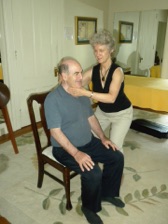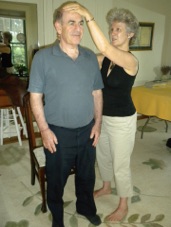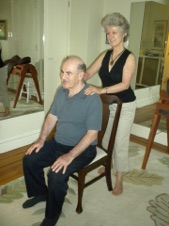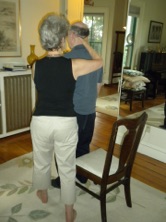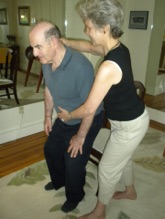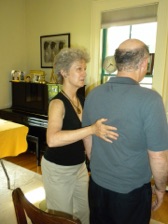-
✦Chair work, and possibly other movement explorations directed towards the student’s specific concerns, typically occupies 20–30 minutes of a lesson. Chair work is the main psycho-physical method for applying the Alexander Technique to the activities of both skilled movement, such as running, tennis, golf, t’ai chi, playing an instrument, or dancing; and of daily life, such as walking, reaching, standing to wash dishes, carrying a child, or working at a computer.
-
✦When guided in and out of a chair to sitting and standing, the student has an opportunity to observe ingrained psycho-physical patterns that are interfering with coordination and breathing and causing pain or constriction, such as tightness in the neck or back. He/she is asked to use the thinking skills of inhibition and direction introduced during table work to cease interfering. The teacher’s touch and verbal instruction together with the student’s thinking allows these maladaptive patterns to fall away. The student thus gains access to a new sense of integration, well-being, skill and poise that can radically change his/her life and work.
-
✦As a result of repeated new experiences of psycho-physical coordination over a number of lessons (Alexander thought 20-30 were necessary, but it depends on the student’s goals), the student becomes able to take charge of his/her own well-being. The student may find that he/she enjoys the process itself, even after his/her immediate goal is met, and come back for refresher lessons.
********** Pictures and Explanations of Chair Work ************



